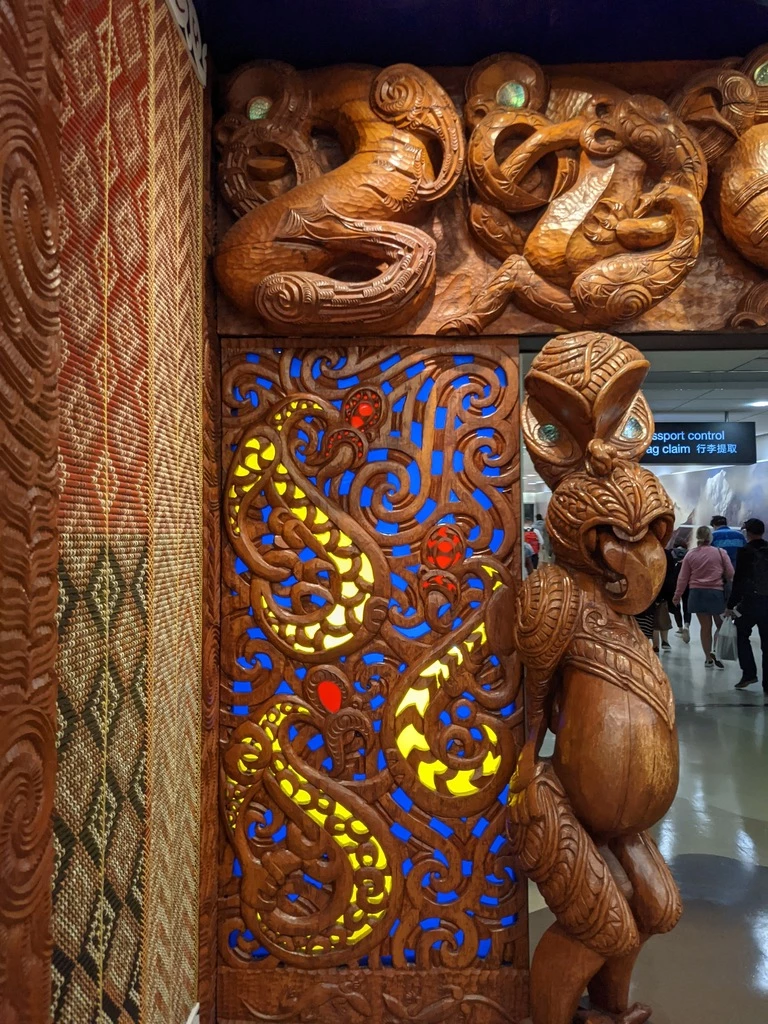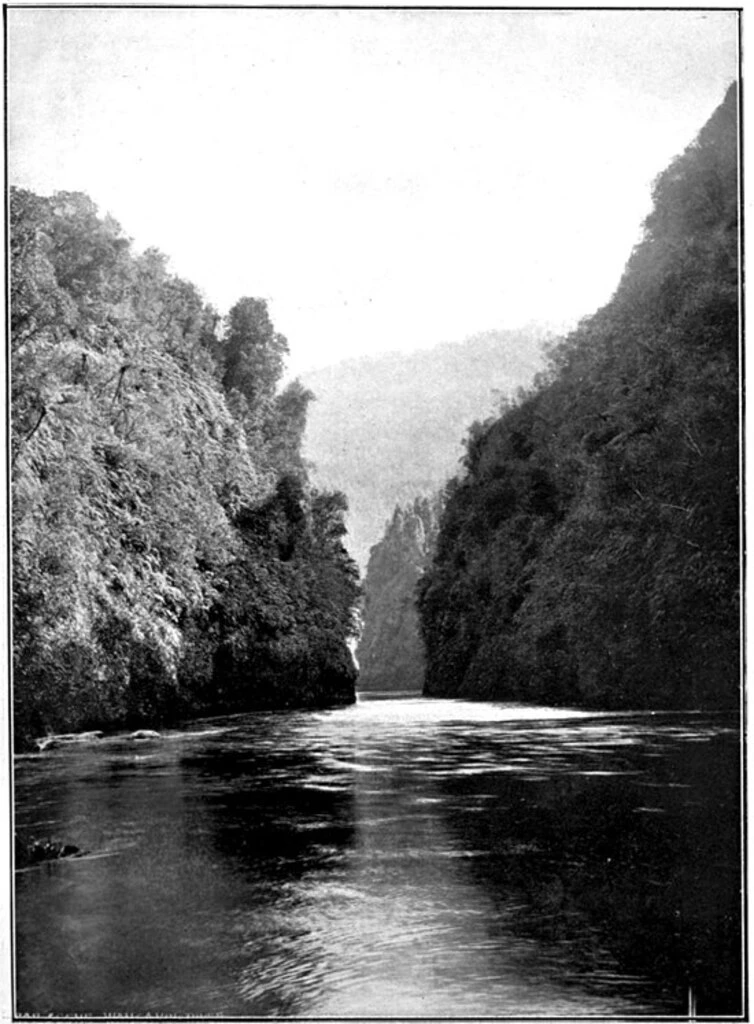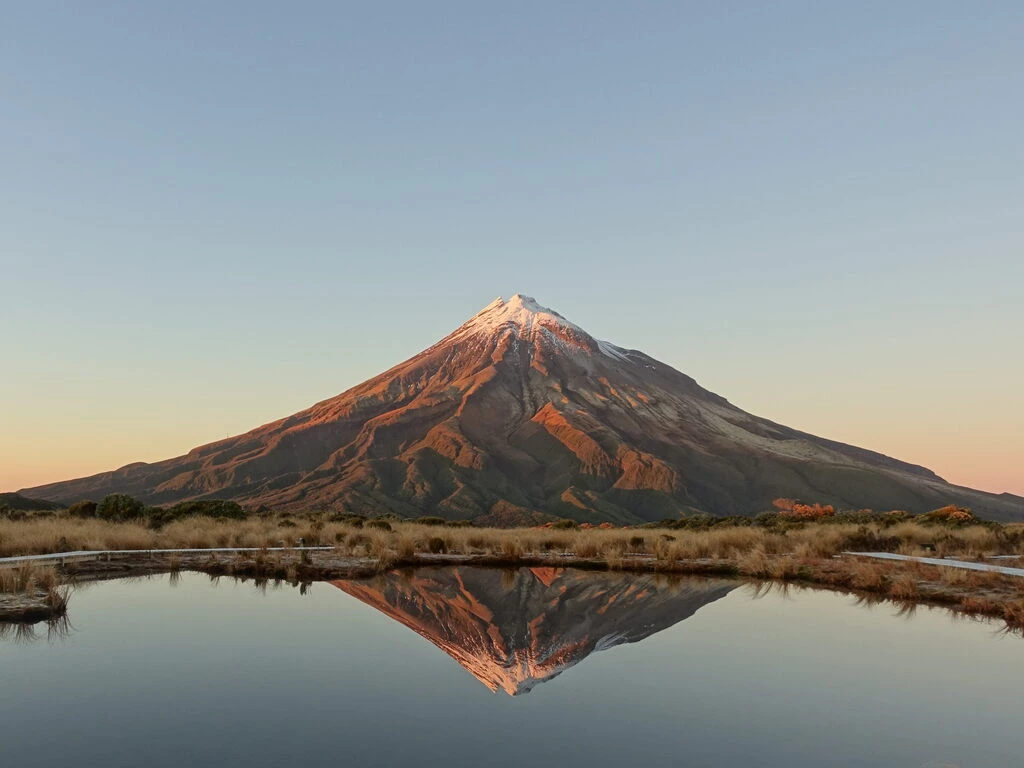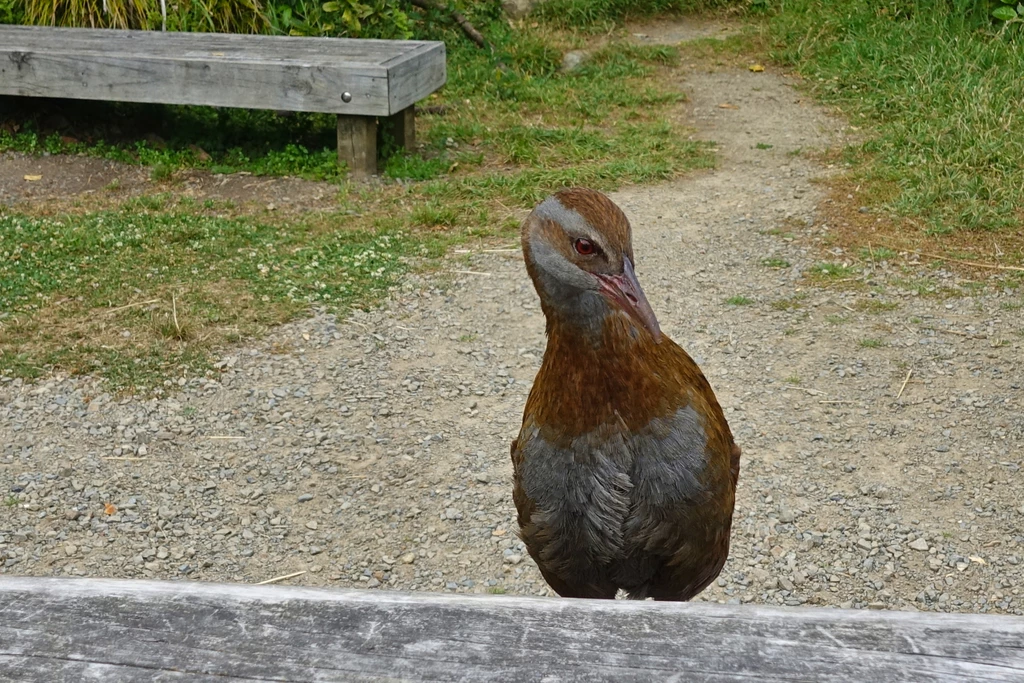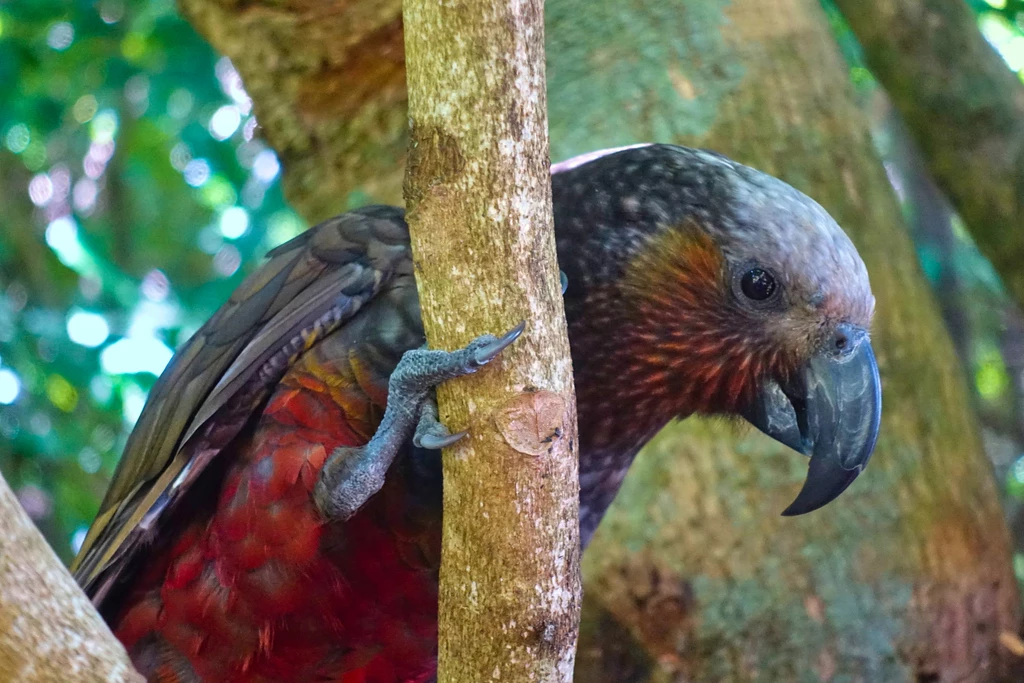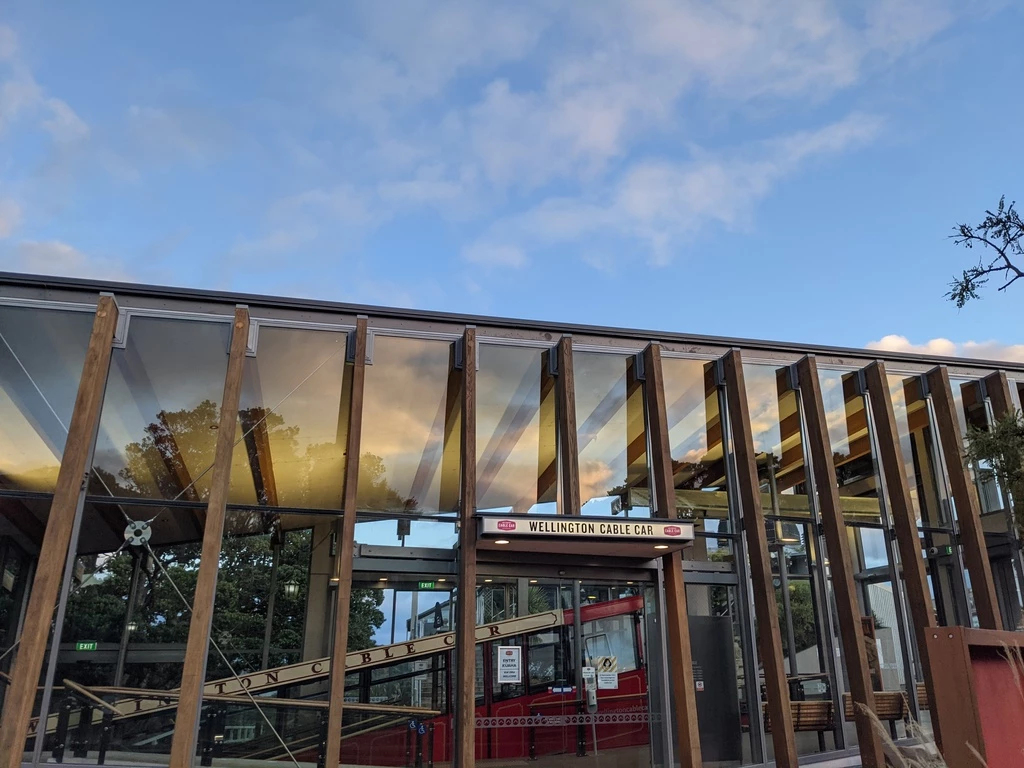I saw a reference on Twitter to this 1906 book, Emerald Hours in New Zealand by Alys Lowth, a travelogue about the author’s turn-of-the-20th-century travels in New Zealand as a tourist. I thought it would be an interesting read, as I’ve been to many of the places she described, 115 years later. I’m going to touch particularly on how she got around the country versus what is possible now.
There’s surprisingly many photos for a 1906 book. Some are courtesy of the nascent Government Tourist department, but others are presumably the author’s own. Must have been quite a production to take pictures back then.
Names are strange. It looks like she wrote under the name “Alys Lowth” but appeared in the press as “Alys Lowth Adlam”. Sure, married names (I find them strange, coming from Quebec). What is also strange is that she is occasionally referred to in-text as “Mary”, which is really not the same as “Alys”.
There’s a lot about the author’s perspective on the world that is quite foreign to me. As Hartley wrote, “the past is a foreign country”, and she was undoubtedly from a privileged background. Turns out that she did not have unlimited money, even though the book is sort of written as if she did; there was an interesting 1909 court case about the rights to the book and the printing costs. The write-up points out that she was highly connected to the Important People in the colony (NZ was a colony until 1907!) at the time, who did not in the end buy thousands of copies of her book.
On the other hand, while I’ve tried to build more wiggle room into my travel schedules, her highly constrained itinerary is no surprise to me. Still, the ability to just go on a trip for a year: what do these people do for a day job? (The travel companions are a navy Captain and his wife, and a NZ Colonel, with whom the author, presumably a young single lady, was surely not flirting.)
To build this table, I checked out current itineraries using Google Maps and my knowledge of the transit system.
| distance (km) | 1906 | 2021 | |
|---|---|---|---|
| Getting to NZ | 4 weeks | 21h | |
| Auckland Ferry Terminal - Bayswater | 2 | 20min | 12min |
| Britomart - Onehunga | 12 | 30min | 22min |
| Auckland - Rotorua train | 227 | 7h30 | N/A (4h13 until cancelled) |
| Rotorua - Frankton Jct - Te Aroha | 160 | 0830 – early afternoon | N/A |
| Frankton Jct - Taumarunui | 158 | unknown | 3h to National Park |
| Auckland - Wellington train | 643 | 20h in 1909 | 11h14 |
| Taumaranui - Pipiriki | 145 | 1 day, ie 6am–5pm (steamer) | 5 days (canoe Great Walk) |
| Pipiriki - Whanganui | 77 | late morning–early afternoon | 3 hours (mail bus) |
| Whanganui - New Plymouth | 193 | afternoon | N/A |
| New Plymouth - Wellington | 388 | 12h | N/A (6h30 until cancelled in 1975) |
Getting to NZ & initial impressions
Took over four weeks on a boat to get from the UK to NZ in 1907. In 2019, it took 5 hours to get from Toronto to Vancouver, then a 2 hour layover, then 14 hours from Vancouver to Auckland (on the same 787-8 Dreamliner it turns out). That’s a 32× speedup. (Yeah, sure, the UK is 3000 miles further from here than Toronto, so 24× speedup if you prorate.)
On the other hand, right now I just couldn’t re-enter New Zealand due to limitations in Managed Isolation/Quarantine space, so I guess it was infinity times faster to get here in 1907 than it is now.
First impressions: Auckland’s International Terminal has this tomokanga gateway carving which I’ve found striking both times I went by.
Lowth wrote about the delay of the Port Doctor, who would clear passengers for entry (again an issue now!):
“You are in a democratic, live-and-let-live country now!” they said. “Even the dock-lumpers do not commence work until eight o’clock, unless they are paid overtime wages, so that you can scarcely expect a Government official to hurry himself!”
Certainly retail keeps limited hours in New Zealand in 2021: stores are generally not open past 6 on weekdays, while I’m used to 9pm Thursdays and Fridays. It’s better for the workers, but less convenient for shopping.
On the other hand, the UK tourists went and tipped service staff in NZ. Still a cultural difference today. Tipping still shouldn’t exist.
“[he] assured me that to see anyone shabbily dressed in New Zealand was quite a rare occurrence.”
(as compared to the UK!) Funny, a Cook Islander just said that about the Cook Islands. But, sure. I don’t really have opinions on how people dress.
Auckland
OK, onto New Zealand. First, they traversed the North Island in 2 weeks.
On their first day in Auckland, they took a 20-minute ride in the “big paddle-boat” across the harbour to some place 15 minutes away from “Lake Takapuna” (presumably the heart-shaped Lake Pupuke in Takapuna). It now takes 12 minutes to go from Auckland to Bayswater Wharf.
They then went to Onehunga. I misread it at first but I presume they went to Devonport, then back over the water to central Auckland, and then took a 30-minute electric tram to Onehunga. The Onehunga train will now go from Britomart to Onehunga in 22 minutes. I have actually taken that train.
Auckland to Rotorua
The narrative says that the train journey from Auckland to Rotorua (227km) took all day: they left in the morning and arrived in the evening. The Wikipedia entry on the Rotorua Express says that it took 7h30, for an average speed of 30km/h. The Geyserland Express ran until 2001 and took 4h13, so about 53km/h. Old-school trains, including the Canadian, seem to run at about that speed over distance.
They arrived in Rotorua after the Red and White Terraces were destroyed (and before the recent eruption of White Island), so geologically pretty similar to now. The sulfur smell is still there.
Rotorua to Taumaranui
Getting from Auckland to Wellington in 1906 was actually somewhat difficult: the first train journey was in August 1908, though the track wasn’t actually quite finished yet. (See also video The Silver Spike). Regular services started in November 1908 shortly after the last spike was driven. Express train took 18 hours. Now 11h15, which has been fairly constant since 1968; someone documented the history of the main trunk line.
What they did was to go from Rotorua backtracking to the then-major hub Frankton Jct (Hamilton, still a Northern Explorer stop) and with a sidetrip to Te Aroha, then back and on to Taumaranui by train. I couldn’t really figure out how long those trains took; the table up there contains my best guess. The text says that the “express” service to Te Aroha was slow and local to Taumaranui even slower, with lots of stops. But the travel companions made the train trip fly by.
There was also a comment in the text that until recently the land route from Auckland to Wellington was to Rotorua, then from Rotorua to Pipiriki over road, 240km (vs by train + boat as they did), then on the river to Whanganui, and then train.
Taumaranui to Whanganui
Taumaranui to Pipiriki (145km) is now the Whanganui Journey, the Great Walk that’s not a walk, on the river that is a legal person. It now takes 5 days of paddling. Back then, it was 1 day of steaming down the river, including a launch that got them from Taumaranui to the steamer, over the now-infamous Whanganui Journey rapids (50/50 rapids?)
Like all the Great Walks, I’ve heard great things about the Whanganui Journey, and the text says “… the scenery made up for all these annoyances [on the boats]”, including “foilage [which] was really lovely”. However when I’m on the river I’ll be wearing gear and not “travelling rugs” as they did. It’ll be interesting to compare my experience with the one from 1906. The author mentions comparisons in her guidebooks to the Rhine and how it’s not at all like that. Comparing NZ to Europe really is not the right thing.
I haven’t been to Taumaranui yet. The text says that they were not thrilled with the quality of the lodging in Taumaranui, but that was just after the construction of the railway. There are now 10 hotels there. Being the terminus of the river journey surely helps.
They then stayed overnight in Pipiriki, the other end of the Whanganui Journey, noting that it had decent tourism infrastructure. Today jetboats go upriver to the Bridge to Nowhere, halfway along the Whanganui Journey trip.
At the time there were a number of boats going from Pipiriki further down the river all the way to Whanganui, leaving mid-morning and arriving early afternoon. Today there appear to be 0 boats (someone tried in 2010 from Whakahoro to Pipiriki), but there is a bookable mail bus that takes 3 hours (or 1.5-2 hours in your own car).
Whanganui to Wellington with a side-trip
From Whanganui it was a side-trip up to New Plymouth to see Taranaki and back to Wellington, all by train.
The author writes about how NZers didn’t check luggage but they did; they also outsourced luggage delivery to the N.Z. Express Company. Me, I try hard to not check luggage. (Sometimes I have to, e.g. when I have climbing gear. When hiking the idea is to not have too much stuff anyway.) However, the author mentions that luggage pickup is chaotic. These days it is invariably well-organized and fast in New Zealand. Unlike Toronto Pearson!
OK, so this phenomenon still happens in NZ, and it happened in the book. “Hullo! old chap! When did you get back?” They are stopping to take pictures in the New Plymouth countryside. Then Colonel Deane randomly encounters people that he knows. Not only have I observed this in places like Murchison, but I’ve encountered a transitive co-author at a campground. It really still is a highly-connected country.
The author got offered a chance to summit Taranaki with their new friends but declined due to lack of schedule flexibility. Her loss!
New Plymouth to Wellington was 12 hours of train travel around the mountain and then along the coast. I’ve driven that distance in 4 hours, which is faster than the train’s 6.5 hours in 1975, but less comfortable.
About halfway, near Bulls, one can either continue along the Kāpiti Coast, or one can go through Palmerston North and then through the Remutakas. (Today, there are indeed still passenger trains that go through to Waikanae on the coast and Palmerston North inland, with possible plans to go on to Levin on the coast). The Remutakas are surprisingly gnarly and driving across them is comparable to driving into Yosemite. In the event, they were dissuaded from taking the Remutaka route:
“We would have to spend two hours in Palmerston, where there is absolutely nothing to do,” he said, “and then go on by a wretched local as far as Masterton, where the hotels are not very good, stop there for the night, make a very early start, and not arrive in Wellington until after mid-day to-morrow. The line runs through very pretty country, I admit, but I doubt if you would find the interest that attaches to the Rimutaka Pass sufficient to make up for so much loss of time, especially as you have only a day and a half to spare for Wellington as it is.”
People still say that there is nothing to do in Palmerston (or, Palmerston North now, to disambiguate from the tiny town of Palmerston on the South Island), though I sent my camera to get fixed there, and picked it up in person; also, getting fingerprints for a police check. We did stay in Masterton and the holiday park was just fine. But a day and a half isn’t enough for Wellington.
Wellington
On the way into Wellington they saw Kāpiti Island off the coast, which had just recently become a native bird reserve (since 1897 per DOC). Native conservation generally wasn’t very well advanced for another 50 years, but at least there was that. We saw kākā and weka, and briefly a saddleback. Also a black-backed gull. There are also red-crowned kakariki, little spotted kiwi, and kōkako, but we didn’t see any of them (and we’d have to stay overnight to see the kiwi, which costs $400 per person, yikes. Zealandia night tours are much more accessible though less of an experience.)
Let’s wrap up this post with Wellington and write another post about the South Island. It’s already long enough!
Of course, “Windy” Wellington gets mentioned. Living in Kelburn on one of the highest ridges was extremely windy. We’re a bit lower now so it’s just windy, not extremely windy.
There’s talk about how Lambton Quay was reclaimed from the sea (there are signs to that effect now, “shoreline 1840”, and a heritage trail). Of course it had electric trams on it: “there is a splendid service of electric cars.” If only. Maybe one of these days with the new National Land Transport Plan.
“The town is beautifully clean and well-kept, especially the wharves; the streets are wide, the buildings a credit to the enterprise of the citizens, who have to take possible and probable earthquakes into consideration.”
Yep, all of NZ is relatively clean (though there are always exceptions). I find the streets to be a bit narrow to drive along comfortably. (I think that’s actually a good thing: it provides traffic calming. Besides, I never drive here anyway. I’d say that my state is not calm, though, when I do drive in Wellington.)
Earthquakes, though, you might ask people who are trying to use the Wellington Central Library about that. They thought it was good but Kaikoura and Christchurch suggest not.
The cable car which is 50m from my place was already there. The hills are still green. They went to the predecessor of the Te Papa and were duly impressed by the Maori content.
“So we had to submit, and went shopping, extremely sceptical as to the prices and quality and style we were likely to find. And to our surprise we found the shops very up-to-date, and the prices remarkably moderate considering the high duties levied on all imported goods, and especially on ready-made clothing of all descriptions, including gloves, hosiery, and foot-gear.”
Hmm, my spouse isn’t thrilled with the style here. I can say that the prices of electronics gear are actually quite moderate. I think that they are actually cheaper than in Canada. As for outdoor gear, North America is better, and I have a few things queued up to buy there.
“The great majority of the colonials begin the day with an early cup of tea, have it again for breakfast, again at eleven, again at luncheon (which is generally dinner), again at 4 p.m., again at dinner, (which is generally “high” tea), and very often end up with a last cup just before going to bed!”
I think people have a lot of coffee now. I’m told that flat whites are uniformly high quality. Of course I have no pictures of them.
“But the manager explained that labour is too costly out here for manufacturers to compete against imported goods.”
1906 or 2021?
Edited to add: another discussion of NZ trains by Anthonie Tonnon
Next up: Across the Cook Strait and onto the South Island (where adventure lives).

